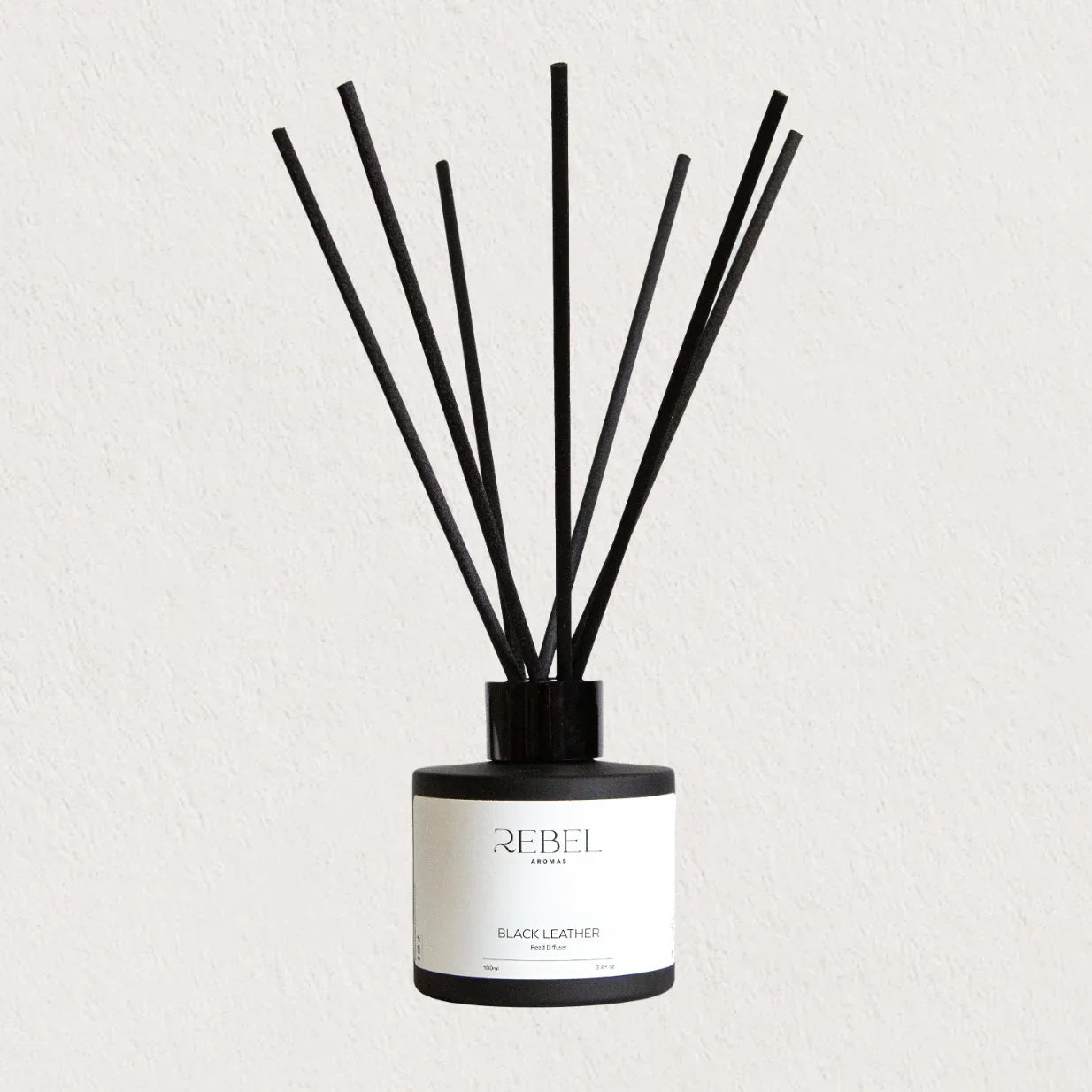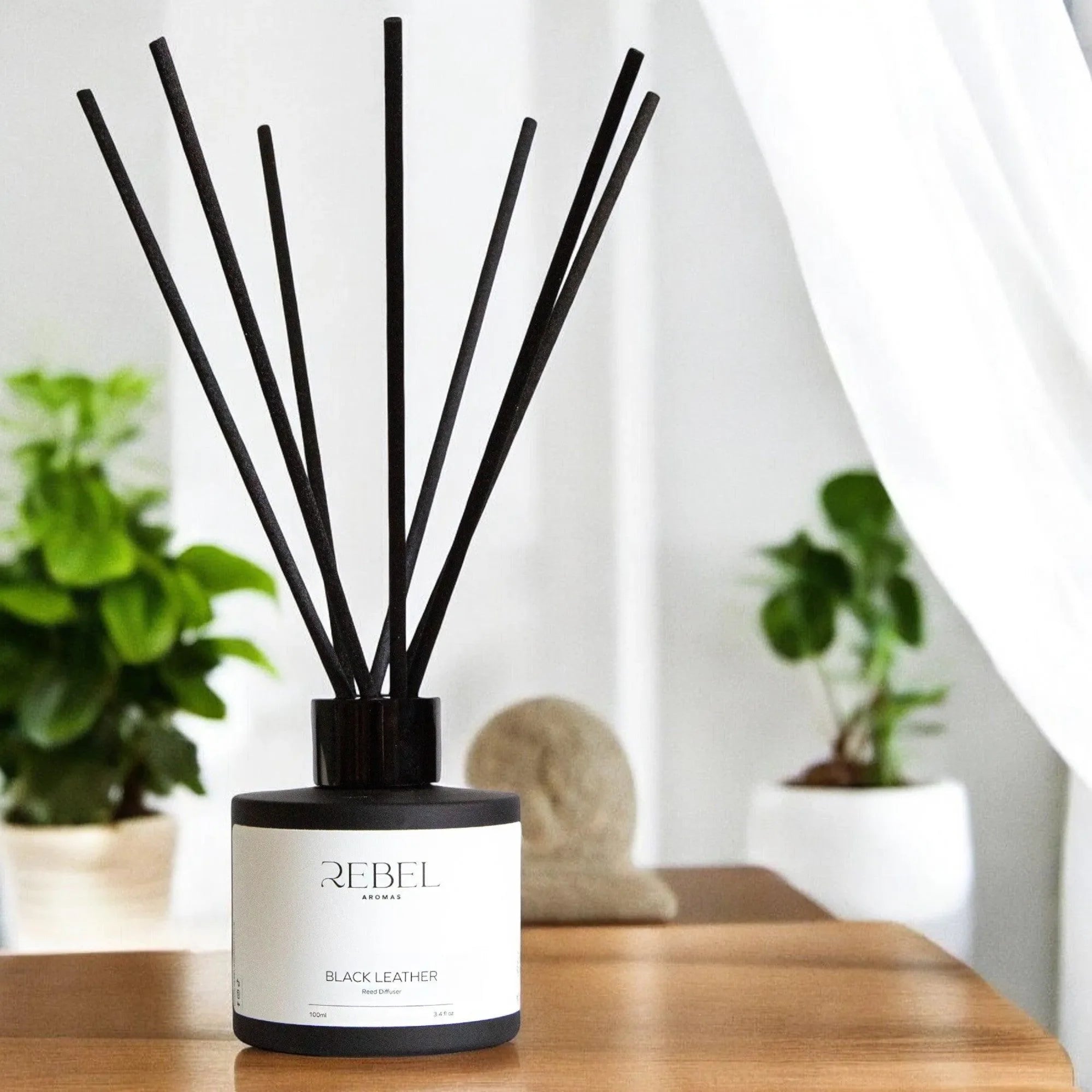Table of Content
Table of Content
Guide to Perfume Types: Finding Your Signature Scent
Exploring perfumes is a fun challenge.
It's key to know the types to find your signature scent, from citrus freshness to woody depths.
Perfumes differ in smell and concentration, affecting their strength and how long they last. For instance, parfum has a rich aroma and lasts longest, while eau de cologne is lighter.
Perfumes evolve from initial top notes to lasting base notes.
So.
Finding perfumes online that match your taste, from aquatic freshness to spicy warmth, makes fragrance exploration rewarding.
Let the Rebel Aroma team take you through a brief guide!
History of Perfumery
The origins of perfumery are as rich and varied as the scents themselves.
You might find it intriguing that the ancient civilisations such as the Chinese, Hindus, and Egyptians were pioneers in the art of perfumery.
The ancient Chinese, for example, were known for their knowledge of perfume craftsmanship.
- Egyptians used perfumes for both ceremonial and beautification purposes.
- Romans and Greeks carried perfume's significance in society, linking scents to pleasure and aesthetics.
The kings of France later embraced perfume, enhancing its standing as a symbol of prestige. In those times, perfume reflected one's status, and was sought after by royalty and aristocrats alike.
The method of creating perfumes has evolved remarkably:
- Extraction techniques improved substantially after the Industrial Revolution.
- Synthetic materials began supplementing natural ingredients, expanding perfume's olfactory palette.
Your knowledge of perfume history wouldn't be complete without acknowledging its ongoing transformation and how it mirrors societal changes. Perfumes once indicated wealth and power but have become an everyday luxury, accessible and enjoyed by all.
Remember, while styles and preferences have shifted throughout history, the fundamental human connection to scent and the desire to express individuality through fragrance have stood the test of time.
Understanding Fragrance Notes

The essence of a perfume is captured in its symphony of notes, each playing a pivotal role to ensnare your senses. Dive into the intricacies of top, middle, and base notes to fully appreciate the artistry in every bottle.
Top Notes
Top notes are your perfume's first impression, greeting you with an initial burst of scent that is often light and refreshing. Think of these as the introduction to a musical piece, setting the stage for what's to come. Typically, top notes include citrusy, herbal, and light fruity scents that evaporate quickly due to their small molecular size.
Middle Notes
Also known as heart notes, the middle notes emerge just after the top notes dissipate. They represent the core of the fragrance, giving the perfume its distinctive character. Floral, spice, and semi-sweet scents are common in this category, designed to last longer than the top notes while transitioning smoothly into the base notes.
Base Notes
Lingering long after the others have faded, the base notes provide a lasting foundation for the fragrance. These rich, deep scents such as sandalwood, vanilla, and musk are heavy molecules that stick around, grounding the perfume with their enduring presence. Base notes are crucial in giving a perfume its long-lasting power, echoing the final, resonant notes in a symphony.
Perfume Concentration Levels
Perfume concentration refers to the strength of the fragrance, which directly affects how long the scent will last on your skin. Different concentration levels offer a range of longevity and intensity, allowing you to choose the ideal fragrance for any occasion.
Eau de Parfum
Eau de Parfum, often abbreviated as EDP, has a higher concentration of fragrance oils, typically between 15% and 20%. This composition provides a balance between strength and subtlety, making it long-lasting—usually four to five hours—and well-suited for an evening out.
Eau de Toilette
Eau de Toilette, or EDT, possesses a slightly lighter concentration of fragrance oils, generally from 5% to 15%. Popular for daily wear, its scent lingers for a few hours, which is perfect for staying fresh through your workday or social gatherings.
Eau de Cologne
Eau de Cologne, abbreviated as EDC, has a much lighter fragrance oil concentration, around 2% to 5%. It's noticeably lighter and often incorporates citrus notes, making it fresh and ideal for a post-shower splash or a gentle daytime scent.
Eau Fraiche
Eau Fraiche is the most diluted form of fragrance, with perfume oil content usually under 1% to 3%. Perfect for a subtle hint of fragrance, it's the most fleeting in terms of wear and is often an excellent choice when you're looking for a minimal scent effect.
Types of Perfumes
Before diving into your fragrance journey, it’s important to know that perfumes are categorised into main groups based on their dominant scent profiles. These groups help you understand what to expect from a fragrance and guide you in choosing one that complements your personal style.
Floral
Floral perfume fragrances are the most popular type, known for their romantic and feminine qualities. They can range from the scent of a single flower—such as rose, lavender, or jasmine—to a complex bouquet combining several floral notes. If you're seeking something that's universally appealing and reminiscent of walking through a blooming garden, a floral perfume might be your perfect match.
Oriental
Oriental perfumes are rich and exotic, often composed of spices, resins, and warm notes like vanilla and musk. These fragrances are sensual and bold, drawing inspiration from the aromas of the East. If your taste leans towards the mysterious and spicy side of scents, you’ll enjoy the depth that oriental fragrances offer.
Woody
Woody scents are primarily characterised by notes derived from woods, such as cedar, sandalwood, and vetiver. These earthy, sometimes smoky aromas evoke a sense of grounding and natural simplicity. Ideal for those who appreciate the outdoors, woody perfumes provide a sturdy and robust fragrance profile.
Fresh
Fresh perfumes are lively and zesty, capturing the essence of fresh-cut grass, rain, sea spray, and citrus fruits. Often seen as energising and rejuvenating, these scents are perfect for day-to-day wear or when you need a quick pick-me-up. Fresh fragrances are a go-to for a clean, crisp scent that feels like a breath of fresh air.
Choosing the Right Perfume
Finding the perfect perfume is about matching it to the right context and your unique style. Consider the occasion, season, and your personality to narrow down your choices.
By Occasion
Formal events: Opt for fragrances with a touch of elegance and sophistication. Florals and ouds are often appropriate for these settings.
Casual outings: Lighter scents like citrus or aquatic notes work well for everyday wear.
By Season
Summer: Look for fresh, zesty, or fruity scents to complement the warm weather. Summer fragrances often have a refreshing quality.
Winter: Richer and more intense aromas such as spicy or woody notes create a feeling of warmth during the colder months.
By Personality
Bold and confident: Strong, distinctive fragrances like leather or spice can reflect a daring personality.
Subtle and understated: Soft, clean scents like musk or light florals might be more to your taste if you prefer something less obtrusive.
Perfume Application Tips
Applying perfume is simple, yet to make the most out of your fragrance, it's essential to consider how and where you apply it.
-
Apply Directly to the Skin: Always spritz your perfume onto clean skin, preferably right after a shower, as this is when your skin is most receptive to absorbing the scent.
-
Pulse Points: These areas emit warmth, which helps diffuse and magnify the fragrance. Common pulse points include your wrists, behind your ears, the base of your throat, inside your elbows, and behind your knees.
-
Do Not Rub: Contrary to popular belief, rubbing your wrists together can actually break down the perfume molecules, diminishing the scent.
-
Layering: For a longer-lasting effect, consider layering your fragrance with other scented products, such as body lotions or oils with the same or complementary scent profiles.
-
Be Mindful of Quantity: It's easy to overdo it, so start with one spritz and add more as necessary. The goal is to create a subtle hint of aroma, not an overwhelming presence.
-
Clothing Caution: Spraying perfume directly on your clothing can lead to stains or damage, especially on delicate fabrics.
Remember, the longevity and projection of your perfume depend on the type of fragrance you have chosen. Eau de toilette variants generally last for a few hours and are considered more suitable for daywear, while eau de parfum concentrations are higher and can carry well into the evening.
By keeping these tips in mind, your fragrance will not only last longer but will also be experienced as it was intended.
Perfume Storage and Care
Properly storing your perfume will not only preserve its fragrance but also extend its shelf life. Here are some friendly tips to ensure your scent stays fresh for as long as possible:
- Keep it Cool: Store your perfumes in a cool and dry place away from any direct heat as high temperatures can break down the perfume's composition and lessen its quality.
- Avoid Sunlight: Sunlight can degrade the delicate balance of your perfume, causing changes to its colour and scent. Always keep your fragrance in a dark place or shielded from direct sunlight.
- Upright Storage: To prevent leaking and oxidation, which can alter the scent, ensure that your perfume bottles are stored upright.
Humidity Is Not a Friend: Bathrooms are typically humid, which isn't ideal for perfume longevity. Instead, consider storing your fragrance in your bedroom, in a drawer or cabinet.
Here's a simple table to remind you of the do's and don'ts of perfume storage:
| Do's | Don'ts |
|---|---|
| Store in a cool, dark place | Expose to direct sunlight |
| Keep upright | Store in humid environments (like bathrooms) |
| Use within the recommended time frame (generally 3-5 years) | Leave the cap off for prolonged periods |
Remember that proper storage is essential to maintain the integrity of your fragrance. Take these precautions, and your perfume will be able to provide that delightful aroma for every special occasion.
Exploring Niche Fragrances
When you enter the world of niche fragrances, you're stepping into a realm where scents transcend the ordinary. Niche perfumes prioritise uniqueness, often created by artisanal makers. They stand apart from mainstream offerings, providing exclusive and sometimes limited edition scents.
- Floral: These fragrances embody the scent of one or more types of flowers, creating a feminine and romantic aroma.
- Woody: Imagine the smell of a forest; these perfumes often include notes of sandalwood, cedar, and other wood smells.
- Citrus: Often refreshing, these scents are characterised by notes of orange, lemon, lime, and other citrus fruits.
- Oriental: Rich and warm, these scents can include spices, amber, and musk for a more assertive profile.
- Gourmand: These fragrances are 'edible' scents like chocolate, vanilla, and caramel.
The beauty of niche fragrances lies in their complexity. The scent you apply in the morning can evolve throughout the day, offering you a more dynamic experience. You'll find these distinct types each appealing to different olfactory preferences.
You may discover these captivating fragrances in specialty boutiques or through select online retailers. Each fragrance tells a story, from its inception to when it graces your skin, it's a sensory journey that's deeply personal and expressive. If this sort of olfactory artistry intrigues you, exploring niche fragrances might be a satisfying endeavour.




